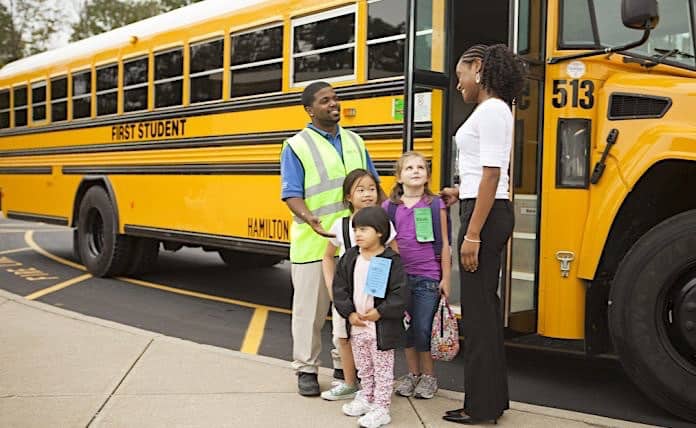The last several weeks have demonstrated both the fearful power of Mother Nature and the resilience of people to respond to tragedy. The hurricanes that have devastated parts of the Caribbean, Houston, and so much of the southeast have required many in the school transportation community to perform extraordinary acts of support for people trying to escape, and then return, to their lives.
From these stories, there is much to learn about the role of school buses in emergency management and disaster operations.
More often than not, the focus is on the technical components of properly staging buses where they can be used to support the removal of mass amounts of individuals from areas where damage is likely to occur. Additionally, what we often speak of is the need to ensure we design proper protocols to provide critical response resources like fuel, staging areas, and shelter while also creating a response plan to protect the health and safety of our workforce. These are all incredibly important and valuable lessons to learn and have a substantial impact on the ability of communities to rebound after a storm.
That is not the focus here.
What has struck me so strongly over the last several weeks is the role that the school bus, and the education system more broadly, plays in achieving something just as important: a sense of normalcy.
The rhythm of the school year is something that many of us take for granted. We assume things are going to be difficult at start-up, and then things will settle down as we transition to a “normal” operating routine through the fall. The kids and the teachers and the drivers start to get a little bit giddy around the holidays and then we settle into the long sled between January and spring break. After that, it is downhill to the end of the school year. Then it all starts again.
Normalcy.
Whether we want to admit it or not, we all seek and crave the routine. The need to transfer thousands of students in and around Houston has massively disrupted this routine. The efforts underway to return to a state of normalcy have been awesome in both their breadth and scale. The reality of the circumstances on the ground is that it is also going to be necessary to undo many of the changes that have occurred, as schools gradually come back online, are closed, or are replaced. At no time have the resources of the industry been so necessary to support our colleagues who are faced with these massive challenges.
It is comforting to know that “the industry” has always been more than a collection of people doing the same job. For as long as I have been involved, the overriding theme has been about people helping people. A commitment to the idea that what happens before and after school to keep kids safe and support their education is just as important as what happens during the school day has been the life’s work of the industry. More importantly, the willingness to support colleagues when difficult problems arise and try to return them to their own sense of normalcy has been a humbling experience to observe.
The focus now is and should be on the students. In the day-to-day activities of transportation departments across the country, it can often be impossible to remember the role that you and your staff play in creating the normalcy so many crave. It is the loss of routine that came through in so many difficult stories from Houston where the scope of the disruption, as of this writing, is much clearer than in Florida or the southeast.
Bringing back the routine of the school day will play a major role in the recovery and renaissance of the places that have been damaged so terribly. The rhythm and normalcy you will create offers something that many kids don’t get anywhere else. The predictability and stability that comes when “Ms. Alice” or “Mr. Bill” arrives at 7:25 (or there about) every morning cannot be underestimated.
This rhythm follows through the day until 3:50 when the door opens again and the student heads for home. Everyone in this business plays a role, whether in a storm-damaged region or not, in taking away some small bit of uncertainty in students’ lives. That little bit of certainty you create can make all the difference between surviving and recovering.
There is no doubt that the road ahead will be a long and difficult one for folks across the storm-battered regions. There is also no doubt that our colleagues will be working tirelessly to shorten the window between disruption and stability. As recoveries from the storms, and recoveries from start-ups, are happening across the nation, it is important to remember that school buses are more than just a utilitarian tool to move a lot of people from one place to another. The school bus is a symbol of and a provider of something much more important: a sense of normalcy.
 Tim Ammon is the chief of business development for the TransPar Group of Companies. The TransPar Group of Companies provides a comprehensive set of transportation solutions to address all aspects of district-owned and contracted operations. He can be reached at tammon@transpargroup.com or at 888-518-3377 extension 510.
Tim Ammon is the chief of business development for the TransPar Group of Companies. The TransPar Group of Companies provides a comprehensive set of transportation solutions to address all aspects of district-owned and contracted operations. He can be reached at tammon@transpargroup.com or at 888-518-3377 extension 510.
















